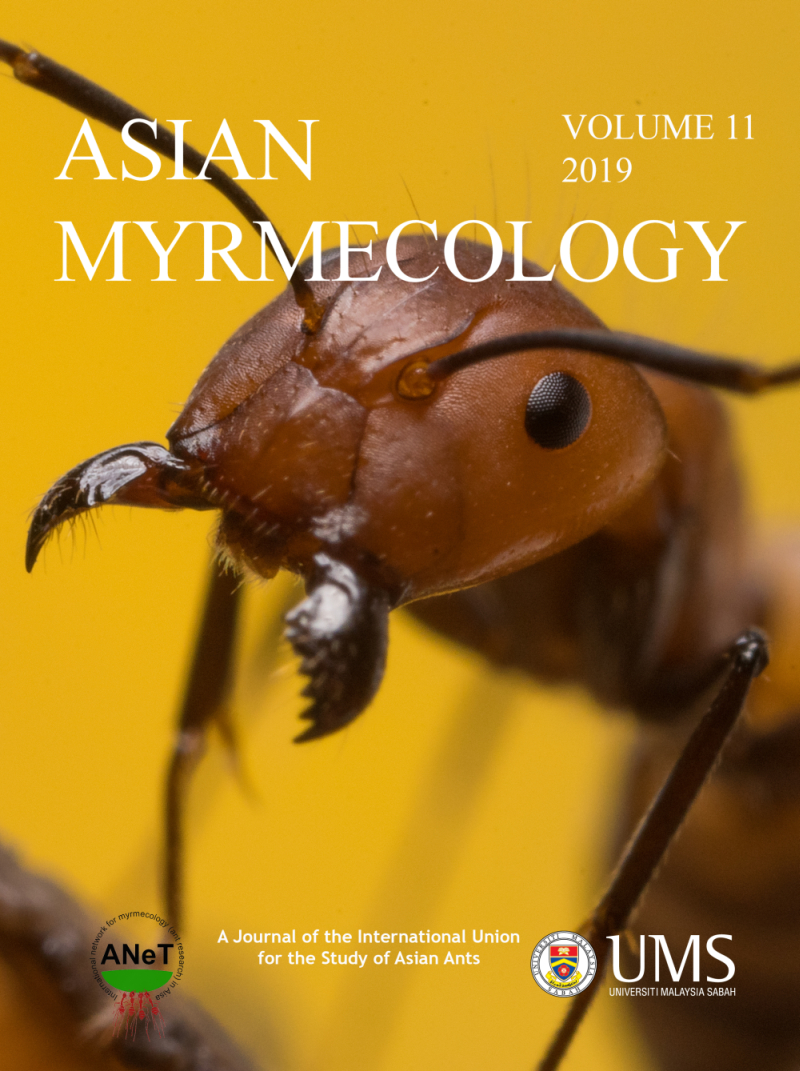ASIAN
MYRMECOLOGY
Image: François Brassard
Morphology
DOI: 10.20362/am.009005
Asian Myrmecology 9: e009005 (1-5)
article first published online 17/May/2017
The metapleural gland of Aneuretus simoni (Formicidae, Aneuretinae)
JOHAN BILLEN*
Abstract:
Aneuretus simoni workers have a paired metapleural gland that in minor workers contains six secretory cells on each side, while majors have 12 cells per side. The heavily sclerotized reservoir opens above the articulation of the hind-legs through a large round orifice with a diameter around 40 μm. Stiff dispenser hairs emerge from the orifice, and assist in guiding the secretory products to the exterior. The rounded to ovoid cells display a well-developed smooth endoplasmatic reticulum, which is a common characteristic for the metapleural gland in ants. This cytoplasmic organization is in agreement with the production of antibiotic substances, which is the most common function of this gland. The difference in gland size between minor and major workers may either indicate that majors are more efficient in producing antibiotics, or that the gland may serve another function, as the cell numbers in A. simoni are the lowest known of all ant species studied so far.
Keywords:
Aneuretus simoni, Aneuretinae, metapleural gland, morphology, ultrastructure
Get PDF (2460K):
Zoological Institute, University of Leuven, Naamsestraat 59, box 2466, B-3000 Leuven, Belgium
*Corresponding author: johan.billen@kuleuven.be



